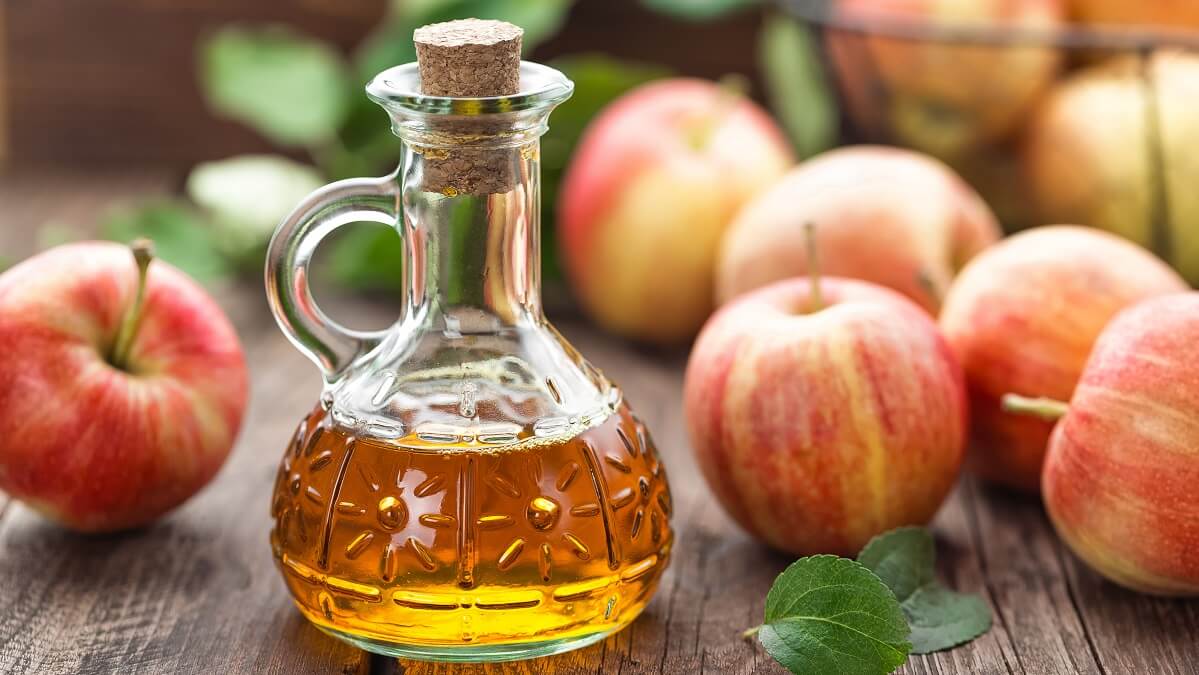Walk down the vinegar aisle of your local supermarket, and you’ll likely be overwhelmed by the variety of options available. From classic balsamic to exotic rice vinegar, the choices seem endless. But what’s the difference and do you really need them all in your pantry?
What is vinegar?
All vinegars share one thing in common: acidity.
“All vinegars begin as a grain, fruit or vegetable,” says cookbook author Martha Holmberg. “They get fermented to become an alcoholic liquid. The alcohol in that liquid gets fermented into acetic acid. The result is a liquid with serious tang and some notes of its original ingredient – hence the slight apple-y flavour of apple cider vinegar and the delicate grape notes of white wine vinegar.”
The most common types of vinegar
White/distilled vinegar
This is the workhorse of the vinegar world. Made from distilled grain alcohol, it has a sharp taste that often prompts a mouth-puckering reaction. It’s not often used for cooking as it has very little character or subtlety. Instead, it’s often used in pickling, as a cleaning agent or (in a pinch) as a substitute for lemon juice in recipes.
Apple cider vinegar
Made from fermented apple juice, apple cider vinegar is milder than white vinegar, with a slightly fruity flavour. It’s versatile and works well in cooked and uncooked dishes, making it a pantry staple. Add in a splash when making a vinaigrette, or try it in barbecue sauces and glazes. Stir a dash through a cooked soup or stew to add flavour and depth.
Sherry vinegar
Sherry vinegar is a distinctive vinegar originating from southern Spain. Crafted from sherry wine, it has an appealingly round, woodsy flavour with hints of caramel and vanilla, yet no sweetness whatsoever. It’s perfect for enhancing Spanish dishes such as gazpacho and paella but also shines when used to create reductions, dressings and sauces. It is understated and therefore versatile.
Balsamic vinegar

Rather than wine, balsamic vinegar starts with just grapes, the juice of which is boiled down to a sweet, fruity syrup, and then aged in various wooden barrels. It originates from Italy and is known for its rich, dark colour and complex, sweet-tart flavour.
You can drizzle it over salads or roasted vegetables and even for a touch of sweetness in savoury dishes. It can overwhelm more delicate greens, but that boldness does make it work well with beef, chicken and fish.
White wine vinegar
White wine vinegar is a light and tangy vinegar made from fermented white wine. Its mild, fruity flavour and subtle acidity make it an ideal choice for delicate dishes such as seafood and light salads, where it can enhance flavours without overpowering them. White wine vinegar also works well in vinaigrettes, marinades, and pickling recipes.

Red wine vinegar
Slightly more complex than its white sibling, red wine vinegar is great in braises and stews and paired with beef. It’s also a popular choice for creating zesty vinaigrettes, marinades and salad dressings, especially when paired with heartier greens and ingredients. It boasts a bold, tangy taste with hints of the wine’s grape variety and complexity.
Rice wine vinegar
Rice wine vinegar, a staple in Asian cuisine, is a delicate and slightly sweet vinegar made from fermented rice wine. It offers a mild acidity and a subtle rice flavour, making it an excellent choice for balancing the flavours in sushi rice, dressings and dipping sauces. Its gentle profile also works well in marinades for seafood and poultry, enhancing dishes with a touch of tang without overwhelming the palate.
How many types of vinegar do you need in your pantry?
Now that you have a better understanding of the various types of vinegar available, you might be wondering if you need to stock your pantry with all of them. The short answer is no; you don’t need every type of vinegar on the market. The key is to select a few that best suit your cooking style and preferences.
If you love Mediterranean dishes, olive oil and red wine vinegar are crucial. Asian cuisine enthusiasts will rely more on rice vinegar and perhaps a touch of soy sauce. If you enjoy Spanish cuisine or want to experiment with more complex flavours, keep sherry vinegar on hand.
Ultimately, the goal is to have a selection of vinegars that enhance your favourite dishes.
How to store vinegar
Vinegar is generally shelf-stable, thanks to its high acidity, which acts as a natural preservative. To keep your vinegar in top condition:
- store it in a cool, dark place away from direct sunlight and heat sources
- keep the bottle tightly sealed to prevent evaporation
- use it within a year or two of opening.
One of the joys of cooking is experimentation, and different kinds of vinegar offer a fantastic opportunity to play with flavours.
How many kinds of vinegar do you have in your pantry? What kind do you use the most? Let us know in the comments section below.

